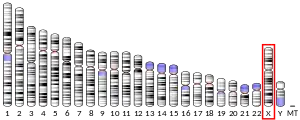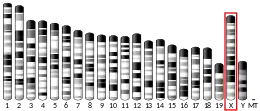| PABPC5 | |||||||||||||||||||||||||||||||||||||||||||||||||||
|---|---|---|---|---|---|---|---|---|---|---|---|---|---|---|---|---|---|---|---|---|---|---|---|---|---|---|---|---|---|---|---|---|---|---|---|---|---|---|---|---|---|---|---|---|---|---|---|---|---|---|---|
| Identifiers | |||||||||||||||||||||||||||||||||||||||||||||||||||
| Aliases | PABPC5, PABP5, poly(A) binding protein cytoplasmic 5 | ||||||||||||||||||||||||||||||||||||||||||||||||||
| External IDs | OMIM: 300407 MGI: 2136401 HomoloGene: 5857 GeneCards: PABPC5 | ||||||||||||||||||||||||||||||||||||||||||||||||||
| |||||||||||||||||||||||||||||||||||||||||||||||||||
| |||||||||||||||||||||||||||||||||||||||||||||||||||
| |||||||||||||||||||||||||||||||||||||||||||||||||||
| |||||||||||||||||||||||||||||||||||||||||||||||||||
| Wikidata | |||||||||||||||||||||||||||||||||||||||||||||||||||
| |||||||||||||||||||||||||||||||||||||||||||||||||||
Poly(A) binding protein cytoplasmic 5 is a protein that in humans is encoded by the PABPC5 gene. [5]
Function
This gene encodes a poly(A)-binding protein that binds to the polyA tail found at the 3' end of most eukaryotic mRNAs. It is thought to play a role in the regulation of mRNA metabolic processes in the cytoplasm. This gene is located in a gene-poor region within the X-specific 13d-sY43 subinterval of the chromosome Xq21.3/Yp11.2 homology block. It is located close to translocation breakpoints associated with premature ovarian failure, and is therefore a potential candidate gene for this disorder. [provided by RefSeq, May 2010].
References
- 1 2 3 GRCh38: Ensembl release 89: ENSG00000174740 - Ensembl, May 2017
- 1 2 3 GRCm38: Ensembl release 89: ENSMUSG00000034732 - Ensembl, May 2017
- ↑ "Human PubMed Reference:". National Center for Biotechnology Information, U.S. National Library of Medicine.
- ↑ "Mouse PubMed Reference:". National Center for Biotechnology Information, U.S. National Library of Medicine.
- ↑ "Entrez Gene: Poly(A) binding protein cytoplasmic 5". Retrieved 2020-04-16.
Further reading
This article incorporates text from the United States National Library of Medicine, which is in the public domain.
This article is issued from Wikipedia. The text is licensed under Creative Commons - Attribution - Sharealike. Additional terms may apply for the media files.



